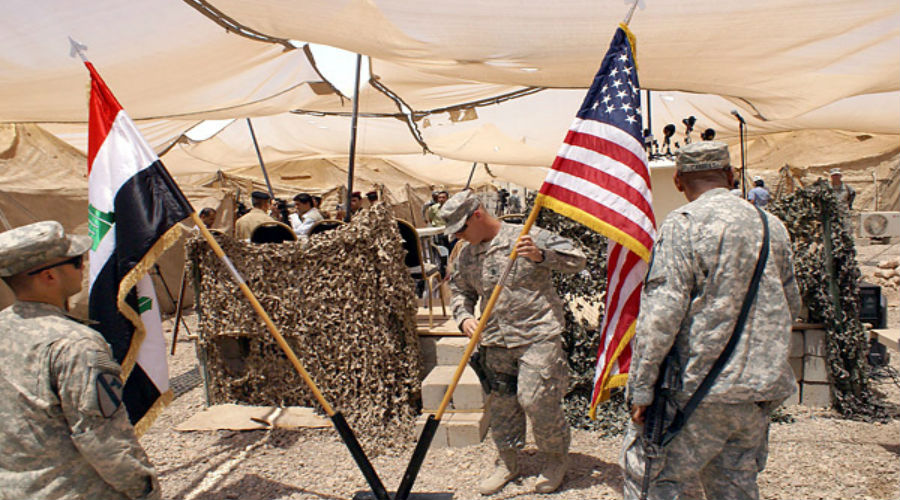United States’ arms deals with Iraq recently re-sparked controversy after US Department of Defense revealed, on February 9, 2018, that US-made Abrams tanks fell into the hands of the Popular Mobilization Units, also known as Al-Hashd al-Shaabi, during confrontations with ISIS. The controversy was fueled by statements by Iraqi Kurdish officials affirming that the tanks were used in confrontations between the Kurdish Peshmerga forces and Iraqi government forces, after the region’s independence referendum in September 2017.
Such arms deal raise several issues, the most important of which revolves around the United States’ position on American-made arms ending up in the hands of non-allies. The Hashd al-Shaabi, in particular, is considered by the United States as a force operating outside the official military institution and maintaining ties with Iran, which, indirectly, benefits from those arms.
US estimates indicate that the Iraqi government’s response to pressure from Washington in this regard remains limited. Accordingly, this in turn imposes another issue related to repercussions of such developments on the current balance of power and influence inside Iraq. Such balance, according to several views, tilts in favor of local and regional forces pursuing policies conflicting with US interests and calculations in Iraq.
Renewed Crisis
M1A1 Abrams tanks, which are among heavy arms provided by the United States to Iraqi land forces, became at the center of previous major crises marring military relations between the two countries. The Iranian-allied Hashd al-Shaabi’s use of the American-made tank in battles with Kurdish militias and ISIS was revealed in October 2015. Defense News reported that the Shi'ite militia equipped the US-made tank along with Russian machine guns and Iranian-stamped ammunition. The United States was angered by the hybridization considered as a breach of the terms of contract signed with the Iraqi government.
Contrasting Positions
This prompted the United States to demand the nine Abrams tanks, claimed to be used by the Hashd al-Shaabi, be pulled back. However, US position revealed two major issues. The first is that, according to several views, there is a lack of guarantees. In other words, Washington is not likely to be able to achieve this goal or prevent certain parties from using the same mechanism in the future. The issue was clearly highlighted by a spokesperson for the US-led coalition in Syria and Iraq, who told the Daily Beast that “we are aware that not all US-provided defense articles are under the control of the intended recipient.”
The second issue revolves around recognition of paramilitary forces in Iraq. Washington has not responded to efforts made by the Iraqi government to legalize the Hashd al-Shaabi, as part of its institutionalized security forces that report directly to the prime minister and supreme commander of the armed forces. This came after Iraq rejected Washington’s demands to keep this militia away from military operations against ISIS.
Pressures put by the United States in this context caused a division in positions inside Iraq. At the official level, the government attempted to justify the crisis by saying that the armed forces and various groups involved in operations against ISIS were under its command and control. It also said that militias, such as the Kataib Hezbollah, were keen to fly their own flags only as an attempt to signal their role in the offensives.
At the non-official level, leaders and elements of the Hashd al-Shaabi responded to the US demands by announcing their rejection of the American presence in Iraq. One of them, Qais al-Khazali, leader of the Iraqi paramilitary group Asaib Ahl al-Haq, threatened, in February 2018, to attack American forces.
This call was not new, as it was previously made by various Iraqi forces. However, renewing it at this specific time cannot be separated from from either the controversy sparked by the Hashd al-Shaabi’s use of the American tanks, or the widening tension between the United States and Iran about the nuclear deal and Iran’s interference in the region.
Potential Options
Concerns are mounting about the possibility of US arms falling into the hands of unwanted parties or being used again against US allies, and may lead to the adoption of one of the following options:
1- Targeting Arms. This option was adopted by Washington during offensives against ISIS. US reports indicated that the US Army had to destroy ten American-made tanks acquired by the group during incursions into several areas in northern Iraq.
2- Tightening Restrictions on Export Contracts. The United States is planning to re-assess legal contracts signed with the Iraqi government. The move would impose more technical restrictions to avoid similar crises in the future.
3- Imposing Sanctions. This would mean reducing arms deals. However, this is not likely to coincide with a reduction in maintenance operations for existing arms. Several US military officials stresses the need of continuing these operations.
4- Pulling Arms. US Department of Defense called for pulling nine out of 146 tanks sold to Iraq since 2015. The nine tanks were reported to be located inside warehouses of the Hashd al-Shaabi militia.
Overall, it can possibly be said that relations between the United States and Iraq entered a new phase in which security commitments would overlap with their differences on several issues. Most importantly is the legal and political standing of the Hashd al-Shaabi militia, because the view of the US Administration of President Donald Trump is that these issues should not be separated from escalating tensions with Iran over its support to terrorist militias and armed groups operating in crisis-hit countries.


